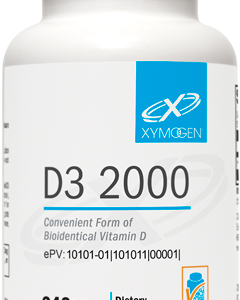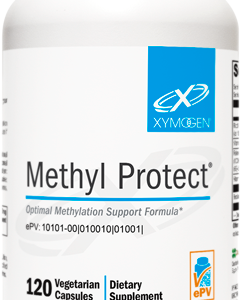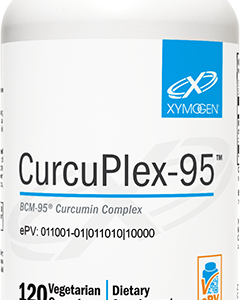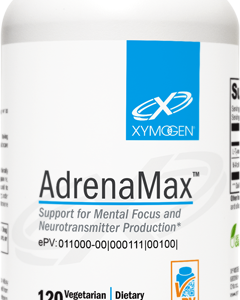Scientific Information/Data
Vinpocetine is derived from vincamine, an alkaloid extracted from the periwinkle plant (Vinca minor). It has been used extensively in Eastern Europe, and more recently in the United States, to support cerebrovascular health and healthy cognitive and mental function during aging. Vinpocetine’s roles in supporting brain function are multi-modal and include its influence on cerebral circulation, its support of antioxidant activity in the brain, and its role in supporting neuronal health.[1-3] Together, these varied actions support overall brain tissue health and function.*
Brain Function The safety and effectiveness of vinpocetine have been tested and validated by in vitro, animal, and human studies. Many human studies demonstrate support of healthy cognitive and mental function—primarily related to improved capillary blood flow and cellular metabolism. Supplementation has also been associated with improved quality of life and support of cerebrovascular function and healthy blood flow.[4-7] It is important to note that absorption of vinpocetine is thought to be significantly higher when given with food. One study found the relative bioavailability under non-fasting conditions was approximately 60% to 100% higher than under fasting conditions.*[8]
Cerebral Blood Flow Neurons are completely reliant on a continuous supply of oxygen and glucose, which is delivered to them by the blood. Vinpocetine may affect phosphodiesterases (PDEs), enzymes that typically act on smooth muscle tissues, such as those in arterial walls, and prevent them from relaxing. Supporting normal action of PDEs promotes healthy vascular smooth muscle function and cerebral blood flow.[2,9] Other research suggests that vinpocetine may improve oxygen-release from hemoglobin, help maintain normal blood viscosity, and increase and maintain red blood cell flexibility—making red blood cells better able to squeeze through tiny capillaries.*[3,10]
Antioxidant Effects Neurological tissue is particularly susceptible to oxidative stress due to its high demand for oxygen, high levels of polyunsaturated fatty acids in neural membrane phospholipids, and low antioxidant defenses. Furthermore, reactive oxygen species (ROS) can produce complex structural and functional changes within the vessel walls of the cerebral vasculature; such changes carry broad implications for cerebral perfusion (flow to brain) and blood-brain barrier (BBB) permeability.[11,12] Scavenging these radicals, therefore, should be considered an important part of supporting cerebrovascular health. Because vinpocetine readily crosses the BBB and is taken up by brain tissue, its support of antioxidant activity in the brain has been investigated. In various experimental models, vinpocetine has been shown to directly support the neutralization of ROS.*[12-14]
Vinpocetine influences neuronal sodium, calcium, and to a lesser degree, potassium ion channels. Vinpocetine’s inhibition of voltage- sensitive sodium (Na+) channels and reduction of intracellular calcium (Ca2+) levels is thought to moderate the excitotoxicity of neurotransmitters. This activity may be an important aspect of vinpocetine’s effect on nerve cell integrity.[1,15] In other research, the cytokine-modulating mechanisms of vinpocetine suggest another avenue by which it may protect brain tissue and neurons—namely inhibition of TNF-α–induced NF-κB activation and the subsequent generation of certain signaling molecules.*[16,17]
References
- Hadjiev D. Asymptomatic ischemic cerebrovascular disorders and neuroprotection with vinpocetine. Ideggyogy Sz. 2003 May;56(5-6):166-72. [PMID: 12861957]
- Muravyov AV, Yakusevich VV, Chuchkanov FA, et al. Hemorheological efficiency of drugs, targeting on intracellular phosphodiesterase activity: in vitro study. Clin Hemorheol Microcirc. 2007;36(4):327-34. [PMID: 17502703]
- Vinpocetine. Monograph. Altern Med Rev. 2002 Jun;7(3):240-43. [PMID: 12126465]
- Valikovics A. Investigation of the effect of vinpocetine on cerebral blood flow and cognitive functions [in Hungarian]. Ideggyogy Sz. 2007 Jul;60(7-8):301-10. [PMID: 17713111]
- Chukanova EI. Efficacy of cavinton in the treatment of patients with chronic blood flow insufficiency. Russian multicenter clinical-epidemiological program “CALIPSO” [in Russian]. Zh Nevrol Psikhiatr Im S S Korsakova. 2010;110(12):49-52. [PMID: 21311488]
- Chukanova EI. Cavinton in the complex treatment of patients with chronic cerebrovascular insufficiency [in Russian]. Zh Nevrol Psikhiatr Im S S Korsakova. 2009;109(9):35-39. [PMID: 19770831]
- Bagoly E, Fehér G, Szapáry L. The role of vinpocetine in the treatment of cerebrovascular diseases based in human studies [in Hungarian]. Orv Hetil. 2007 Jul;148(29):1353-58. [PMID: 17631470]
- Lohmann A, Dingler E, Sommer W, et al. Bioavailability of vinpocetine and interference of the time of application with food intake. Arzneimittelforschung. 1992;42:914-17. [PMID: 1418055]
- Truss MC, Stief CG, Uckert S, et al. Initial clinical experience with the selective phosphodiesterase-I isoenzyme inhibitor vinpocetine in the treatment of urge incontinence and low compliance bladder. World J Urol. 2000;18:439-43. [PMID: 11204266]
- Tohgi H, Sasaki K, Chiba K, et al. Effect of vinpocetine on oxygen release of hemoglobin and erythrocyte organic polyphosphate concentrations in patients with vascular dementia of the Binswanger type. Arzneimittelforschung. 1990 Jun;40(6):640-43. [PMID: 2396997]
- Chrissobolis S, Faraci FM. The role of oxidative stress and NADPH oxidase in cerebrovascular disease. Trends Mol Med. 2008 Nov;14(11):495-502. [PMID: 18929509]
- Horvath B, Marton Z, Halmosi R, et al. In vitro antioxidant properties of pentoxifylline, piracetam, and vinpocetine. Clin Neuropharmacol. 2002 Jan- Feb;25(1):37-42. [PMID: 11852295]
- Deshmukh R, Sharma V, Mehan S, et al. Amelioration of intracerebroventricular streptozotocin induced cognitive dysfunction and oxidative stress by vinpocetine—a PDE1 inhibitor. Eur J Pharmacol. 2009 Oct;620(1-3):49-56. [PMID: 19699735]
- Solanki P, Prasad D, Muthuraju S, et al. Preventive effect of piracetam and vinpocetine on hypoxia-reoxygenation induced injury in primary hippocampal culture. Food Chem Toxicol. 2011 Apr;49(4):917-22. [PMID: 21193009]
- Sitges M, Nekrassov V. Vinpocetine selectively inhibits neurotransmitter release triggered by sodium channel activation. Neurochem Res. 1999 Dec;24(12):1585-91. [PMID: 10591410]
- Jeon KI, Xu X, Aizawa T, et al. Vinpocetine inhibits NF-kappaB-dependent inflammation via an IKK-dependent but PDE-independent mechanism. Proc Natl Acad Sci U S A. 2010 May;107(21):9795-800. [PMID: 20448200]
- Medina AE. Vinpocetine as a potent antiinflammatory agent. Proc Natl Acad Sci U S A. 2010 Jun;107(22):9921-22. [PMID: 20495091]
*These statements have not been evaluated by the Food and Drug Administration. This product is not intended to diagnose, treat, cure, or prevent any disease.






